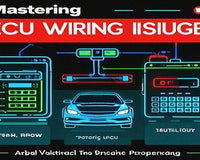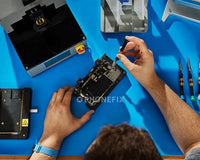An abrupt battery drain, a flickering headlight, a sudden car surge, or an engine that refuses to start may all be signs of electrical system problems. it can be a daunting task to figure out what's going wrong. Still, with the proper knowledge, you can confidently tackle them. Do you currently have these problems?
In addition to the starter and alternator, the electrical system provides electricity to the lighting and music systems. it ensures that safety systems, such as airbags and ABS, operate as intended. If your car’s electrical system is not functioning correctly, it may have several performance issues and be hazardous.
The multimeter is a versatile and indispensable tool for diagnosing car electrical problems. It can measure voltage, current, and resistance, which are crucial parameters in assessing the health of your car's electrical system.
Measuring Voltage: To measure voltage, first, set your multimeter to the voltage measurement mode. If the voltage is significantly lower, it could indicate a problem with the battery, alternator, or the charging system.
Measuring Resistance: Measuring resistance helps you determine if a component is functioning properly or if there is a break in the circuit. If the reading is very high or infinite, the fuse is blown and needs to be replaced.
Measuring Current: Measuring current requires a bit more caution as you need to break the circuit and insert the multimeter in series. If the current draw is outside the normal range, it could mean the component is faulty or there is a short circuit in the circuit.
If you use a multimeter to check the car and find no problems, then there may be more complicated problems. You may need to use an oscilloscope to check the car again. Oscilloscope is a powerful tool that allows you to visualize electrical signals in real - time. It's especially useful for diagnosing complex electrical problems where you need to analyze the shape, frequency, and amplitude of electrical waveforms.
Oscilloscope displays electrical signals as waveforms on its screen. Different types of electrical components and systems produce distinct waveforms. By comparing the waveform you observe on the oscilloscope with the normal waveform for a particular component or system, you can quickly identify any deviations that may indicate a problem.
Electrical problem may be the cause of dimming or flickering headlights, dashboard lights, or interior lighting. It also cause accessories, such as power windows, locks, or the radio, to malfunction or operate sporadically. FNIRSI FD10 OBD2 Car Scanner Diagnostic Tool can quickly read and clear diagnostic trouble codes (DTCs) stored in the car's computer.
It is more advantageous to prevent electrical issues than to fix them. The key component of your car’s electrical system is the battery. Regular battery checks, frequent wiring inspections, connection checks, and ensuring correct grounding are preventive actions. Early detection and prevention of electrical problems can save you from costly terminal repairs and unplanned failures, ensuring your car’s reliability and safety.
Effective Methods for Diagnosing Car Electrical Problems










